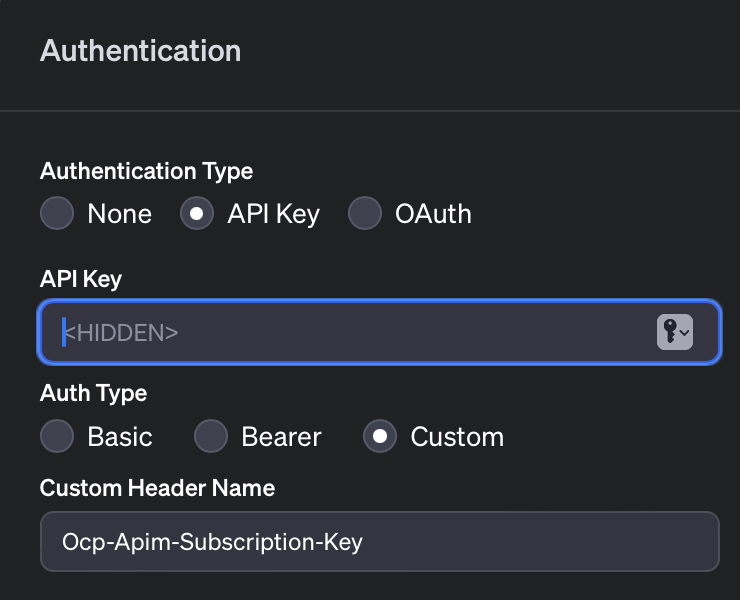Sui 区块链编程: 通过 NodeJs/Javascript 函数获取 Gas 费用
在区块链开发的世界中,理解和管理gas费用对于优化交易至关重要。Sui作为一个相对较新但功能强大的区块链平台,有其独特的方式来处理gas价格。让我们来探讨如何使用Node.js和JavaScript获取Sui的gas价格。
Sui中的Gas理解
在区块链语境中,gas指的是执行交易或智能合约所需的费用。在Sui中,gas以MIST计量,其中1个SUI等于10^9个MIST。这意味着gas价格通常以每个交易或操作的MIST来报价。
获取Gas价格
这里有一个简单的异步函数来从Sui节点获取当前的gas价格:
const QUICKNODE_URL = "https://sui-mainnet-endpoint.blockvision.org"; // 你可以使用你自己的节点。
async function getGasPrice() {
try {
const response = await axios.post(QUICKNODE_URL, {
method: "suix_getReferenceGasPrice",
jsonrpc: "2.0",
id: 1,
params: [],
});
return parseFloat(response.data.result);
} catch (error) {
console.error("获取gas价格时发生错误:", error);
return null;
}
}
代码解析
- axios.post: 我们使用axios向Sui RPC节点发送HTTP POST请求(假设QUICKNODE_URL在其他地方已定义为正确的URL)。
- 方法和JSON-RPC: 使用 suix_getReferenceGasPrice 方法查询gas价格。采用JSON-RPC 2.0协议进行通信。
- 错误处理: 如果获取gas价格时发生错误,会记录错误,并返回null以表示失败。
使用函数
你可以在异步上下文中调用这个函数:
(async () => {
const gasPrice = await getGasPrice();
if (gasPrice !== null) {
console.log(`当前gas价格: ${gasPrice} MIST`);
} else {
console.log("无法获取gas价格。");
}
})();
重要说明:
- MIST: 返回的gas价格是以MIST计量的。为了实际应用,你可能需要将它转换为SUI以增加可读性,使用 gasPrice / 10^9。
- QuickNode URL: 你需要用你实际的RPC节点URL替换QUICKNODE_URL。如果你不使用QuickNode,你可以连接到任何支持此RPC方法的Sui节点。
- 异步特性: 记住,区块链交互本质上是异步的,因此使用async/await来处理promise。
获取Sui区块链Gas费用/价格的结论
使用Node.js获取Sui中的gas价格是直接的,但需要理解区块链gas机制的细微差别以及JSON-RPC通讯。这个代码片段可以作为开发者开始将gas价格检查整合到他们的Sui区块链应用中的起点,确保他们能够有效管理交易成本。
英文:Sui Blockchain Programming: Get the Gas Fee via NodeJs/Javascript Function
Sui 区块链编程
- Sui 区块链编程: 通过 NodeJs/Javascript 函数获取 Gas 费用
- Sui区块链编程: 获取最新块高度(NodeJs/Javascript函数 Latest Block Number/Height)

相关文章:
- 油管视频/Youtube Premium会员的好处: 用了就回不去了 从前年开始,我成为了 YouTube 会员,不过中间时断时续,因为觉得价格有点贵。在英国,YouTube 家庭会员每月费用是 19.99 英镑(可供五位家人共享),而个人会员则是每月 12.99 英镑。去年回国前,我暂停了一段时间的会员服务,但回到英国后发现自己已经离不开 YouTube 会员了。 成为会员的最大好处就是没有广告。最初,YouTube 是没有广告的,但随着平台上视频数量激增,广告也逐渐多了起来。如今,YouTube 已然是长视频的王者,谷歌当年的收购绝对算得上是一次非常成功的商业决策,足以写进教材。随着视频数量越来越多,用户一辈子也看不完平台上的内容,所需的服务器资源也水涨船高。因此,谷歌插入广告确实无可厚非。然而,从最开始的一两个广告,到如今非会员用户每隔五分钟就得忍受一次广告,用户体验确实大打折扣。 会员的另一个好处是可以下载视频,不过并不是直接下载为视频文件.mp4,而是保存在设备上。这样一来,可以提前下载好音乐或视频,开车时就无需耗费流量了。 此外,YouTube...
- TikTok未能出售: 流量“难民”涌入小红书, 能否接得住? 最近,随着TikTok因监管压力未能在1月19日前完成出售事宜,大量的内容创作者和用户正在寻找新的平台安置自己的内容生态和社交网络。这一波流量转移,意外地将小红书(RedNotes)推向了风口浪尖。打开小红书,推荐页面中已经充满了国外用户的身影,甚至有用户戏称“小红书变成了‘国际版种草机’”。然而,这一流量迁徙带来的热闹背后,蕴藏着深刻的挑战和机会。 不过,由于美国新政府很快就要上台了,特朗普对抖音是比较友好的,所以目前这种局面可能会迎来新的转机。拜登政府上台后,政策方向可能会与特朗普有所不同,尤其是在针对中国企业的态度上,可能会采取更加审慎的评估方式,而不是简单的封杀或施压。 对于TikTok而言,这或许意味着缓冲的机会。一方面,拜登政府可能会重新审视TikTok在美国的安全问题,并尝试通过更为温和的方式解决争议,比如进一步完善数据监管和用户隐私保护,而非直接推动出售或下架。另一方面,如果政策有所松动,TikTok也许能够在国际市场重新站稳脚跟,挽回部分因政策不确定性流失的用户和广告商。 不过,这种转机并非完全没有挑战。TikTok必须快速适应美国监管层面可能提出的新要求,比如建立更加透明的数据管理流程、确保服务器本地化、以及加强对算法和内容分发的自我监督。此外,TikTok还需要修复此前因封杀风险导致的品牌信任危机,重新赢得用户和合作伙伴的信赖。 对于小红书来说,这也可能是一个需要重新评估全球化策略的时刻。如果TikTok因政策调整成功稳定住国际市场,那么这波流量“难民”可能会逐渐回归,甚至减少在小红书上的活跃度。这要求小红书在短期内快速吸引这些用户,并通过强化社区黏性和内容多样化,尽可能锁住这批流量。同时,小红书也需要未雨绸缪,为可能到来的用户流失准备应对策略。 无论TikTok是否会迎来转机,这场流量的争夺战都表明,在全球化的竞争中,灵活应变、长期规划和技术实力才是赢得用户和市场的关键因素。 外来流量与用户画像的冲突 小红书一直以其独特的社区氛围闻名,聚焦于生活方式、种草推荐和用户亲身体验分享,目标用户以中国年轻女性为主。随着大量国际用户的涌入,这一平台的内容调性可能面临巨大的冲击。很多本地用户已经开始抱怨,算法推荐的内容逐渐变得“陌生”,甚至暴露了个人的兴趣偏好。这种文化差异和用户需求的差异,可能会对小红书社区的核心黏性带来挑战。 不过,对于小红书来说,国际流量的到来也可能是一种绝佳的扩展契机。如果能够妥善应对文化融合问题,同时优化算法和内容分发策略,小红书完全有机会成为全球用户的内容分享平台,撬动TikTok留下的空白市场。 连夜招募的“英文审核”反映了什么? 面对流量的猛增,小红书显然已经嗅到了机会。平台据称正在连夜招募英文审核团队,足见其对全球化的重视和危机意识。审核机制的建立是平台内容生态的重要一环,尤其是当国外用户涌入时,如何维持内容的合法性、合规性和调性,将决定小红书能否将这波流量真正留住。 目前来看,这种快速扩展反映了小红书的敏捷反应能力,但从长期来看,审核机制的完善需要时间,语言和文化隔阂可能会导致内容质量在短期内下降。同时,海外用户的内容生产习惯与中国用户不同,是否能够在算法推荐和审核效率之间找到平衡,也是一个值得关注的问题。 小红书的变现模式是否支撑得住? 流量增长对于任何平台来说都是一次巨大的红利,但能否将流量转化为收入才是真正的考验。小红书的商业模式以种草电商为核心,通过“内容+电商”的闭环完成流量变现。然而,国际市场中用户的购买力、消费习惯以及对本土化商品的接受程度,都可能成为变现过程中的障碍。 国际用户的涌入如果只是短期行为,或者消费习惯难以转化为实际的电商订单,那么平台即便流量激增,也很难转化为长期收益。相比之下,TikTok的变现模式更依赖广告,而小红书的广告收入占比相对较低。如果能够快速调整策略,比如增加短视频广告位或推出国际版电商模块,小红书或许能在全球市场中占得一席之地。...
- 剑桥网红餐厅 The Ivy Cambridge Brasserie 上周刚过40岁生日,媳妇带我去剑桥的一家网红餐厅——The Ivy Cambridge Brasserie。这家餐厅是朋友推荐的,和那家Trinity一样很有名,可惜我们在剑桥待了近10年才知道。 The Ivy Cambridge Brasserie 是剑桥市中心一家备受欢迎的网红餐厅,位于历史悠久的 Trinity Street。餐厅设计时尚典雅,融合了现代与经典元素,为食客提供了一个舒适而奢华的用餐环境。这里的菜单丰富多样,覆盖全天用餐,从早餐到晚餐以及下午茶,提供英式经典美食如松露鸡肉派、英式早餐等,也有一些国际风味的菜肴。得天独厚的位置和独特的氛围使得 The Ivy Cambridge Brasserie...
- 负电价活久见: 安装Octopus智能电表省电费甚至赚钱 前几周我的电气公司 Octopus 终于来装智能电表了(Smart Meter),虽然是免费安装的,但是排队排了有两三年了吧。因为之前一直写邮件催的时候就老是说 Not Ready。 收到邮件说可以安装智能电表我还是相当开心和期待的,因为已经听说这玩意好,但是还是得亲身体验一下。工程师来安装大概不到2小时,其中需要停电闸一会儿,重新接下线。装好后,给了个小册子,自动切换到了 Agile 的电价,也就是每半小时的电价都不一样,提前一天可以在手机App和网站上查得。 正好在原来的电价计费合同快要结束前2天换到了智能电表计价 Octopus Agile方式,但是系统还是扣了我75英镑 Exit Fee (提前合同结束得交违约费),不过我一个电话打过去,公司很爽快就给我退了。...
- 按揭贷款(房贷,车贷) 每月还贷计算器 去年给银行借了17万英镑 买了20万7500英镑的房子, 25年还清. 前2年是定率 Fix Rate 的合同 (年利率2.49%). 每个月大概是还 700多英镑. 有很多种还贷的计算方式, 定率/每月固定 是比较常用的. 简单来说就是 每个月交的钱是...
- 你给SteemIt中文微信群拖后腿了么? 这年头不缺算法, 就缺数据. 这两天花了很多时间在整API上, 整完之后自己用了一下还觉得真是挺方便的. 今天就突然想看一看自己是否给大家拖后腿了, 于是调用每日中文区微信群排行榜单的API, 刷刷拿着 NodeJs 练手: 1 2 3 4 5 6...
- ACM题解系列之 – 最小堆栈 (Min Stack) 没事刷刷题能防止老年痴呆, 而且也能让你随时处于最佳状态, 随时都可以炒老板鱿鱼另谋高就. 题目: 设计一个堆栈(Stack)使 push, pop, 和取最小 min 操作时间复杂度都是 O(1). 这题的难点就是在于怎么样用O(1)常数时间复杂度来取得堆栈里的最小值. class MinStack {...
- HPZ800服务器主板太老不支持超过2TB的大硬盘 我家里一直用的是HPZ800服务器, 很吵, 很老, 虽然这台服务器已经有十年之久(我在EBAY上买来用了五年多了), 但是即使放到今天, 这服务器速度依旧很快, 很稳定. 由于服务器用的是ECC较验内存, 所以基本上不重启关机. HPZ800主机有两个硬核CPU – 因特志强 X5650 – 每个CPU是12核....
